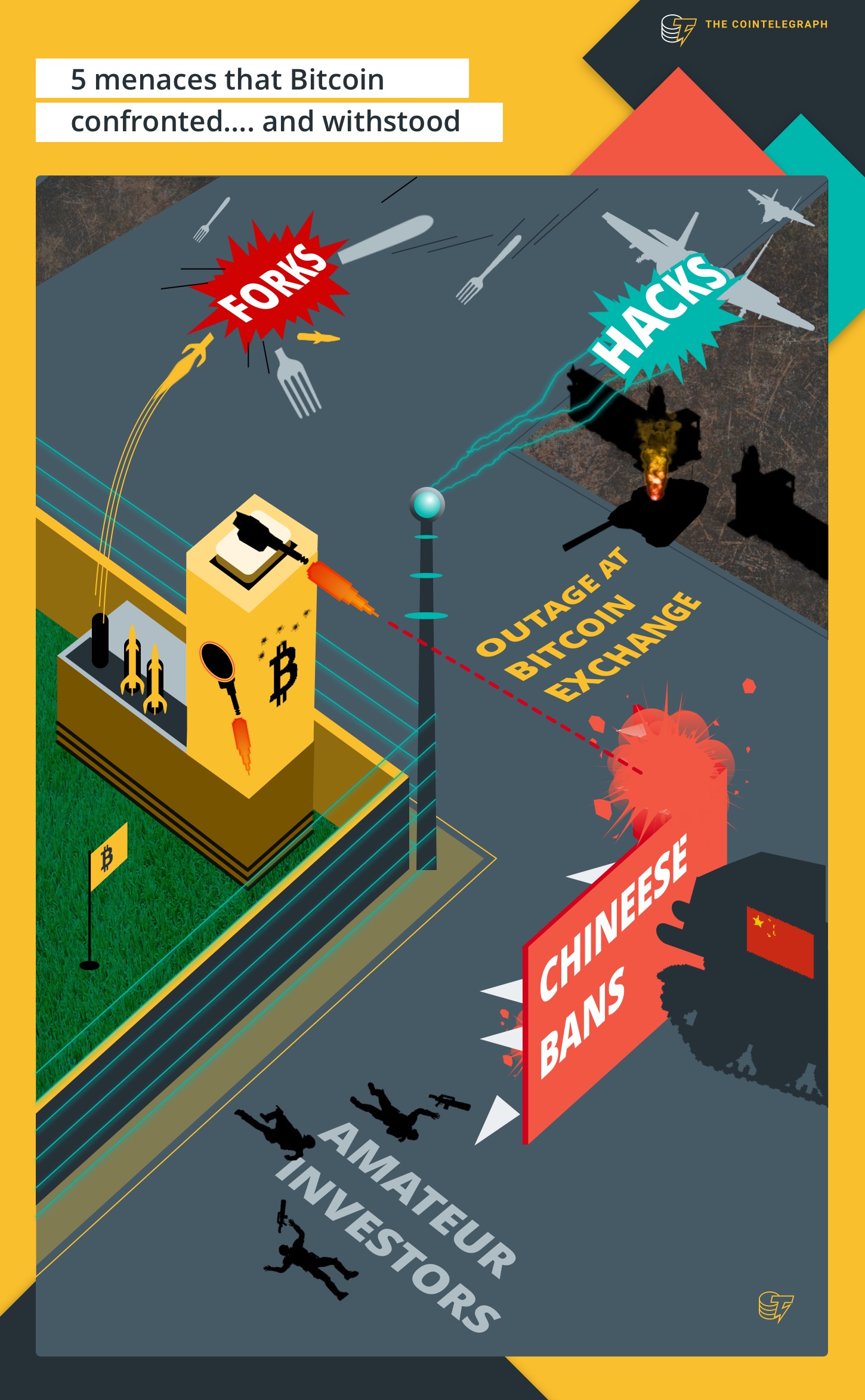With Bitcoin price reaching a new high of $5,000 recently, and then dumping back down to nearly $3,000, it’s been a wild ride this month.
These crashes are part and parcel of the volatile digital currency, and drops of 10, 20, even 40 percent are not that uncommon.
Since Bitcoin began, there have been some major crashes, but there have also been some good lessons to learn.
April 2013’s meltdown
In one of the earlier and larger drops, Bitcoin price went from $233 to $67 overnight, a massive 71 percent drop in 12 hours. It would take seven months to recover.

This meltdown was attributed to Bitcoin rubbing shoulders with the mainstream for the first time. The digital currency had never crossed $15 before 2013 but a flood of media coverage helped drive it well above $200.
This was a drastic and violent correction that followed the exuberant price rise, although, there was also an outage at Mt. Gox which was said to be a catalyzing factor.
The fammed 2013 bubble
After April, Bitcoin price hovered around $120 until later in the year when prices suddenly skyrocketed to a high of $1,150 in late November. However, by mid-December, the price had tumbled back down to less than half of that, and that’s where it would stay for four years before crossing $1,000 again.

The late 2013 crash had all the signs of a bubble, as amateur investors rushed the digital currency. It was further perpetuated as regulators took a positive stance on it, while exchanges such as Coinbase had started making the buying process far easier.
The Mt. Gox misfortune
Adding to the long road to recovery after the collapse in December 2013 was the Mt. Gox calamity that nearly sunk the whole Bitcoin boat. Bitcoin was steadily growing through January and February when it suddenly fell nearly 50 percent from $867 to $439.

This collapse was triggered when Mt. Gox announced that it had had a major hack. On Feb. 7, the exchange halted withdrawals, and later revealed thieves had made off with 850,000 Bitcoins (which would be worth around $3.5 bln today).
The summer sale of 2017
In early January of this year, Bitcoin price once again crossed the $1,000 mark which set off a massive price spike as through June the digital currency was topping $3,000. However by Mid-July it had fallen back 36 percent to $1,869.

Despite the boom and increased interest, there were still concerns about the code and a civil war was brewing. The Aug. 1 hardfork was looming large and scaring many investors as to the future of the coin, since users and miners sought different solutions.
Ironically, such a fork did materialize in August in the form of rival Bitcoin Cash — but this seems to have done no long term harm to Bitcoin.
China’s stern intervention
With the fork out of the way and peace restored between different parties, Bitcoin once again tore off on a huge growth spurt. It climbed close to $5,000 at the start of September before plunging 37 percent by Sep. 15, shaving off over $30 bln from Bitcoin's total market cap in the process.

This drop has been put down to one thing really, and that’s China. The socialist country first loudly cracked down on ICOs, and then went after digital currency exchanges, making its feelings on the disruptive monetary system known.
Lessons to be learned
While it is not a lesson, more a way of life with Bitcoin, it must be plainly known that the digital currency is volatile.
What’s just as apparent is that Bitcoin crashes seem to coincide with speculative run-ups coupled with exogenous shocks, such as a major hack or a government crackdown.

However, it has been seen that Bitcoin always bounces back. The bouncing back process can be anywhere from a week to a couple years, and the cautionary tale there is long term holding bypasses any stress caused by massive drops.
The crashes of late have been far smaller, less susceptible, and the bounce backs have been quicker and more resilient. This is indicative of a maturing market. Today, the cryptocurrency market is so much bigger and has proven to be resilient.
